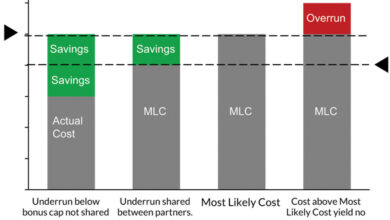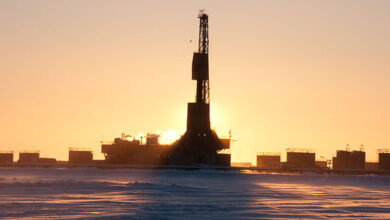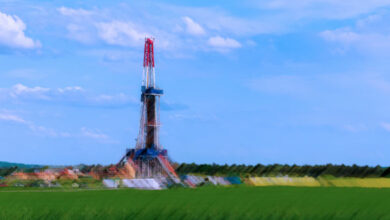Drilling & Completion News
New Zealand moves to reverse oil and gas exploration ban instituted in 2018
To address gas security concerns and take advantage of economic potential, the New Zealand government is recommending changes that would reinstate offshore petroleum exploration.
“Natural gas is critical to keeping our lights on and our economy running, especially during peak electricity demand and when generation dips because of more intermittent sources like wind, solar and hydro,” said Shane Jones, New Zealand’s Minster of Resources.
“When the exploration ban was introduced by the previous government in 2018, it not only halted the exploration needed to identify new sources, but it also shrank investment in further development of our known gas fields, which sustain our current levels of use.
“Without this investment, we are now in a situation where our annual natural gas production is expected to peak this year and undergo a sustained decline, meaning we have a security of supply issue barreling towards us.”
Changes being considered include:
- Reversing the 2018 ban on new petroleum exploration outside onshore Taranaki.
- Removing the 2018 restriction preventing new petroleum permit holders from accessing some Taranaki conservation for petroleum activities other than minimum impact activities.
- Changes to how petroleum exploration permits are allocated. Currently permits are allocated through a competitive tender process. The bill proposes allowing the use of a non-tender method called priority in time.
- Changes to the petroleum decommissioning requirements to align with international best practice.
- Changes to provide signals to the industry and international investors that New Zealand is “open for business.”
- Technical legislative changes to improve regulatory efficiency and ensure processes are working as intended, including fixing inconsistencies of terms and drafting errors.
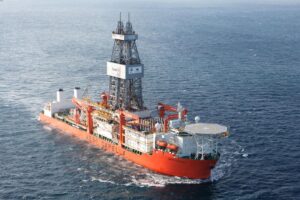
Seadrill drillships win contracts in South Korea, US Gulf
Seadrill announced in May contract awards for the West Capella and West Neptune drillships.
The West Capella secured a one-well contract in South Korea, with an estimated duration of 40 days. The contract is valued at approximately $32 million, including a mobilization fee of approximately $10 million and excluding fees for additional services. The contract is expected to commence in December 2024.
The West Neptune secured a six-month contract extension with an independent operator in the US Gulf of Mexico, expected to start in Q3 2025 in direct continuation of its current contract. The estimated contract value of approximately $86 million excludes fees for additional services, such as managed pressure drilling (MPD). Seadrill will upgrade the West Neptune with MPD capabilities during planned out-of-service periods, making it the 10th rig in the company’s fleet with MPD or MPD-equivalent technologies.
Vista adds rig to accelerate Vaca Muerta development
Vista Energy and Nabors Industries signed a contract to add a third drilling rig, aiming to accelerate Vista’s development of Vaca Muerta in southern Argentina.
“The addition of a third drilling rig will provide us flexibility to accelerate our activity plan in Vaca Muerta,” said Juan Garoby, Co-founder and COO of Vista. “We forecast to put into production between four to eight wells by year-end, in addition to the 46 previously announced.”
Under the contract, a high-spec Nabors rig will be deployed in the second half of 2024. In support of Vista’s plan to reduce the carbon footprint of Vaca Muerta operations, there is potential to electrify this equipment. Earlier this year, using technology provided by Nabors, Vista electrified the first drilling rig in Vaca Muerta, Nabors PACE F24. The rig is now powered entirely by renewable energy.
Chevron takes 80% interest in offshore Namibia license
Chevron executed an agreement that provides for the company’s entry into Namibia’s Petroleum Exploration License 82 (PEL 82) with the assumption of an 80% working interest and operatorship. NAMCOR, the National Petroleum Corporation of Namibia, and Custos Energy will each maintain a 10% carried interest in PEL 82.
PEL 82 governs blocks 2112B AND 2212A, located in the Walvis Basin offshore Namibia. Previous drilling activity on PEL 82 includes the Murombe-1 and Wingat-1 wells. Results confirmed the regional extension and presence of the Barremian-Aptian oil-prone source rock.
PEL 82 represents a high-potential opportunity in the Walvis Basin. Approximately 70% of the total block area is covered by existing seismic – over 3,500 km of 2D and 9,500 sq km of 3D data.
“We are pleased to announce the continuing expansion of our in-country partnership with Chevron through their entry in PEL 82. This is one of the most advanced and interesting opportunities offshore Namibia outside of the Orange Basin,” said Knowledge Katti, Chairman and CEO of Custos. “We are pleased to see our efforts over the last decade on PEL 82 result in this important step forward, adding further to Namibia’s world-class offshore opportunity.”
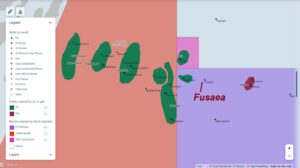
Petronas discovery in Suriname Block 52 estimated to approach 400 million bbl
Petronas Suriname announced in May it had made a third hydrocarbon discovery in Block 52 at the Fusaea-1 exploration well in Suriname’s Block 52, located about 170 km offshore and 9 km east from Roystonea-1. Wood Mackenzie reported that Roystonea and Fusaea’s recoverable resources are approaching 400 million bbl. “This could be enough to support an FPSO with an oil-processing capacity of up to 100,000 bbl/day FPSO development,” said Mark Oberstoetter, Head of Americas Upstream for Wood Mackenzie.
The well was spudded in February 2024 and drilled to a total depth of 5,227 m, encountering several oil- and gas-bearing Campanian sandstone reservoir packages. Further evaluation is being undertaken to determine the full extent of this discovery and its potential for an integrated development with the recent Roystonea-1 and Sloanea-1 discoveries.
“The favorable results attained from the Fusaea-1 exploration well have solidified Petronas’ standing in Suriname for material hydrocarbon resource, following the Sloanea-1 and Roystonea-1 discoveries,” said Petronas Executive Vice President and CEO of Upstream, Datuk Adif Zulkifli.
Nine deepwater fields have been discovered in Suriname waters since 2019, but the country still awaits its first sanctioned development.
According to Wood Mackenzie, TotalEnergies and APA Corp are close to sanctioning a cluster FPSO development on Block 58. Block 52 is east of Block 58 and has different owners (Petronas operating 50%, ExxonMobil 50%). Fusaea is the third discovery in the block, following Sloanea and Roystonea.
“In addition, APA Corporation, Petronas and CEPSA drilled the 2022 Baja discovery in Block 53. This is 8 km north of Roystonea and could eventually be part of a wider cluster development,” Mr Oberstoetter said.
Petronas has already secured tax relief if it develops gas on the block. The 2020 Sloanea discovery is now being appraised with a second well. Wood Mackenzie holds Suriname’s discovered resources at more than 2.4 billion bbl of oil and liquids and more than 12.5 tcf of gas.
Noble Resilient, Noble Resolve jackups win contracts for well intervention, P&A
Noble announced new contracts for two jackups, the Noble Resilient and Noble Resolve.
Harbour Energy awarded a well intervention contract to the Noble Resilient spanning 30-70 days, estimated to commence in July. This contract will start in direct continuation of the rig’s current program with Wintershall in Denmark and prior to commencement of a previously announced contract with Petrogas.
The contract for the Noble Resolve is with an undisclosed operator, offshore Spain. The campaign will consist of plug and abandonment work on 13 wells and is expected to commence in Q2 2025 and last approximately 170 days. The contract value is approximately $40 million, including mobilization and demobilization of the drilling unit.
Cooperation allows first oil from Eldfisk North to be achieved ahead of schedule
TotalEnergies achieved first oil production on the Eldfisk North Project in early May, beating the original startup schedule of Q2 2024 due to cooperation and efficiency across companies. The project is located in the Greater Ekofisk Area in the North Sea and operated by ConocoPhillips.
The Norwegian authorities had approved the Eldfisk North Plan for Development and Operation in December 2022.
“The Eldfisk North project is indeed unlocking additional resources whilst benefitting from the use of available capacities in the existing infrastructure in the Greater Ekofisk Area,” said Jean-Luc Guiziou, Senior Vice President Europe for Exploration & Production at TotalEnergies.
The Eldfisk North Project comprises three six-well subsea templates located approximately 7 km from the Eldfisk Complex. The development includes up to 14 wells, of which nine are producers and five will inject water into the reservoir. The project will produce 15,000 BOED at peak and use the available capacity of Eldfisk facilities for processing and transportation.
Woodside’s first oil from Sangomar Field marks offshore milestone for Senegal
Woodside achieved first oil from the Sangomar field offshore Senegal in June, marking the safe delivery of the country’s first offshore oil project. Sangomar Field Development Phase 1 is a deepwater project including a stand-alone FPSO facility with a nameplate capacity of 100,000 bbl/day, and subsea infrastructure that is designed to allow subsequent development phases.
Phase 1 development includes 23 wells – 11 production wells, 10 water injection wells and two gas injection wells. So far, 21 of the 23 wells have been reported to be drilled and completed, including nine production wells.


